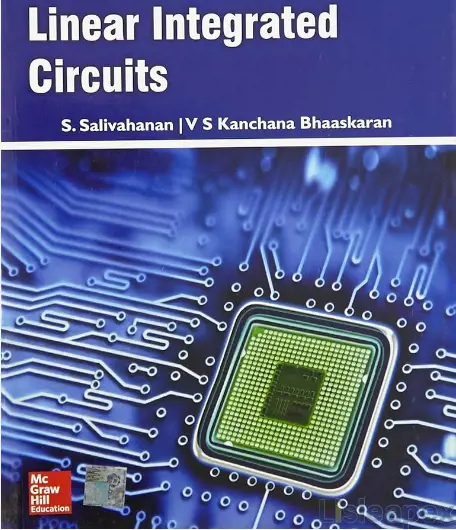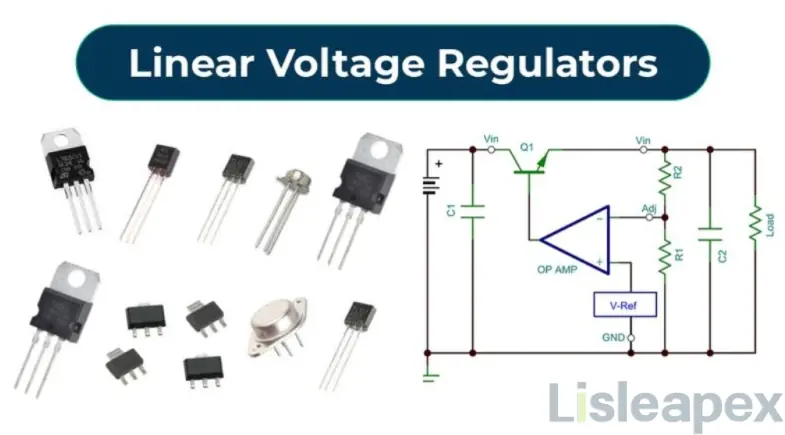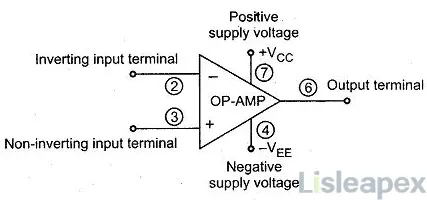1. Introduction:
Linear integrated circuits introduction
Linear Integrated Circuits (ICs) are the unheralded workhorses of electronics, deftly managing continuous signals precisely. This in-depth exploration delves into the intricacies of linear ICs, unraveling their basis, components, applications, and more.
2. What is a Linear Integrated Circuit in Electronics?

A Linear Integrated Circuit, or linear IC, is a sophisticated semiconductor device designed to process continuous analog signals. Unlike their digital counterparts, these circuits maintain a linear relationship between input and output, a critical characteristic for applications demanding precision in signal processing.
3. Basis of Linear ICs:
The crux of linear ICs lies in their capability to linearly process continuous analog signals. This foundational characteristic facilitates accurate amplification, modulation, and filtering, laying the groundwork for a myriad of electronic applications requiring fidelity in signal manipulation.
4. Components of a Linear Integrated Circuit:
The orchestration of linear ICs involves a symphony of components:
- Operational amplifiers (OP-AMNonlinearityPs)
- Resistors
- Capacitors
- Inductors
- Transistors
These components collaborate seamlessly, conducting various analog functions within the circuit with precision and reliability.
5. Applications of Linear Integrated Circuits:
Linear ICs showcase their versatility in diverse applications:
- Audio amplification
- Signal conditioning
- Voltage regulation
- Oscillators
- Communication systems
Their adaptability positions them as indispensable elements in crafting circuits for precision measurement and control systems.
6. Subject Code for Linear Integrated Circuits:
Educational institutions may assign varying subject codes. Commonly, codes like ECEXXX are utilized, with "XXX" denoting a numerical identifier specific to the institution.
7. Example of a Linear Circuit:
A quintessential example of a linear circuit is an operational amplifier configured for voltage amplification. This elegant configuration amplifies an input voltage signal while preserving linearity, a crucial aspect of signal fidelity.
8. Most Commonly Used Type of Linear IC:

The Operational Amplifier (OP-AMP) takes center stage as the most widely employed linear IC. Its versatility, high gain, and compatibility with diverse configurations make it a linchpin in analog circuit design.
9. Advantages of Linear Integrated Circuits:
Linear ICs boast a plethora of advantages, including:
- High precision
- Low noise
- Ease of design implementation
Their proficiency in processing continuous signals with accuracy positions them as stalwarts for applications demanding reliability and stability.
10. Disadvantages of Linear Circuits:
Despite their merits, linear circuits exhibit sensitivity to environmental conditions, potential signal distortion, and limitations in dynamic range compared to their digital counterparts. These considerations underscore the importance of thoughtful design.
11. Identifying a Linear Circuit:

Recognition of linear circuits is facilitated by their linear response to continuous signals and the prominent presence of analog components, such as OP-AMPs, within the circuit architecture.
12. Difference Between Linear IC and Nonlinear IC:
| Criteria | Linear ICs | Nonlinear ICs |
|---|---|---|
| Signal Processing Type | Continuous signals | Nonlinear signals |
| Relationship Between Input and Output | Linear relationship | Nonlinear relationship |
| Applications | Audio amplification, signal conditioning, voltage regulation, etc. | Nonlinear signal processing, complex signal manipulation, etc. |
| Notable Example | Operational Amplifier (OP-AMP) | Diodes, transistors, nonlinear amplifiers, etc. |
| Representation of Signal | Continuous waveform | Non-periodic or nonlinear waveform |
| Main Characteristics | Linearity, accuracy, and stability | Nonlinearity, Complexity |
13. Difference Between Linear and Digital Integrated Circuits:
| Criteria | Linear ICs | Digital ICs |
|---|---|---|
| Signal Processing Type | Continuous signals | Discrete signals (Binary) |
| Relationship Between Input and Output | Linear relationship | Discrete (Binary) relationship |
| Applications | Audio amplification, signal conditioning, voltage regulation, etc. | Digital logic, microprocessors, memory devices, etc. |
| Notable Example | Operational Amplifier (OP-AMP) | Microcontrollers, CPUs, memory ICs, etc. |
| Representation of Signal | Continuous waveform | Binary (0s and 1s) |
| Main Characteristics | Linearity, accuracy, and stability | Digital logic, memory storage |
14. Difference Between Power Electronics and Linear Electronics:
| Criteria | Linear Electronics | Power Electronics |
|---|---|---|
| Signal Processing Type | Low-power signal processing | High-power applications |
| Relationship Between Input and Output | Linear relationship | N/A (Focus on Power Control) |
| Applications | Audio amplification, signal conditioning, voltage regulation, etc. | Power supplies, inverters, converters, motor drives, etc. |
| Notable Example | Operational Amplifier (OP-AMP) | Silicon-controlled rectifiers (SCRs), power transistors, power converters, etc. |
| Representation of Signal | Continuous waveform | High-power electrical signals |
| Main Characteristics | Linearity, accuracy, and stability | High power handling, efficiency |
15. Conclusion:
In the intricate landscape of electronics, linear integrated circuits emerge as the silent architects, shaping the foundation of analog signal processing. A comprehensive understanding of their intricacies equips engineers and enthusiasts alike to harness these unsung marvels' full potential in the electronics world.
16. Related suggestion
16.1 Monolithic IC vs. Hybrid IC: An In-Depth Exploration
16.2 What are the Different Types of Integrated Circuit(IC)?
16.3 Differences: 7400, 7404, and 7408 Digital Integrated Circuits
16.4 Sonic Excellence: Audio Amplifier Integrated Circuits (IC) Insights
Stay updated with Lisleapex by signing up for the newsletter


 Congratulations On Your Successful Submission
Congratulations On Your Successful Submission
 Submission Failure
Submission Failure